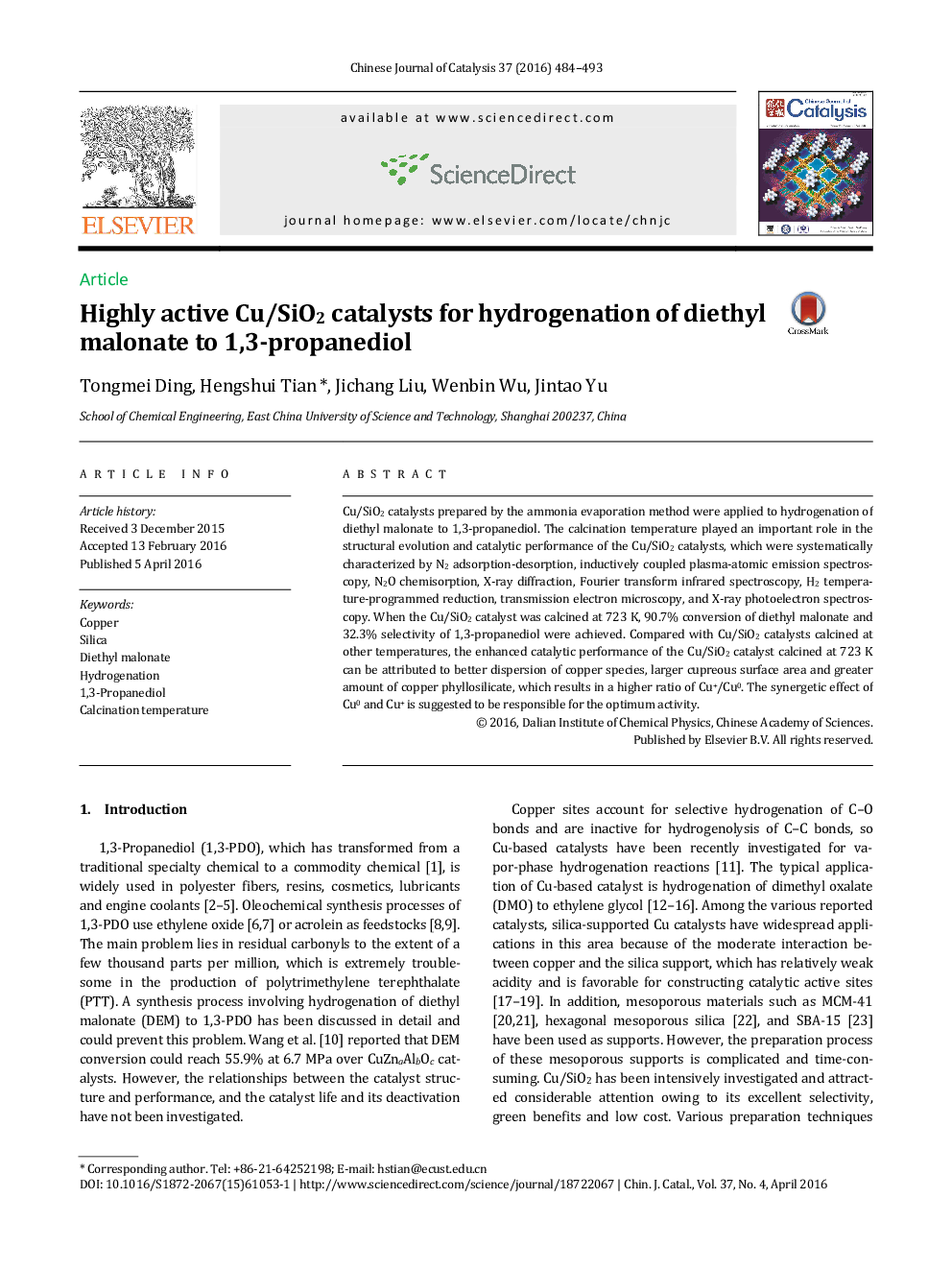| Article ID | Journal | Published Year | Pages | File Type |
|---|---|---|---|---|
| 59144 | Chinese Journal of Catalysis | 2016 | 10 Pages |
Cu/SiO2 catalysts prepared by the ammonia evaporation method were applied to hydrogenation of diethyl malonate to 1,3-propanediol. The calcination temperature played an important role in the structural evolution and catalytic performance of the Cu/SiO2 catalysts, which were systematically characterized by N2 adsorption-desorption, inductively coupled plasma-atomic emission spectroscopy, N2O chemisorption, X-ray diffraction, Fourier transform infrared spectroscopy, H2 temperature-programmed reduction, transmission electron microscopy, and X-ray photoelectron spectroscopy. When the Cu/SiO2 catalyst was calcined at 723 K, 90.7% conversion of diethyl malonate and 32.3% selectivity of 1,3-propanediol were achieved. Compared with Cu/SiO2 catalysts calcined at other temperatures, the enhanced catalytic performance of the Cu/SiO2 catalyst calcined at 723 K can be attributed to better dispersion of copper species, larger cupreous surface area and greater amount of copper phyllosilicate, which results in a higher ratio of Cu+/Cu0. The synergetic effect of Cu0 and Cu+ is suggested to be responsible for the optimum activity.
Graphical AbstractCu/SiO2 catalysts prepared via the ammonia evaporation method were applied in diethyl malonate hydrogenation. The optimum catalytic performance could be obtained over Cu/SiO2 calcined at 723 K, acquiring better copper species dispersion, larger cupreous surface area and larger ratio of Cu+/Cu0.Figure optionsDownload full-size imageDownload as PowerPoint slide
